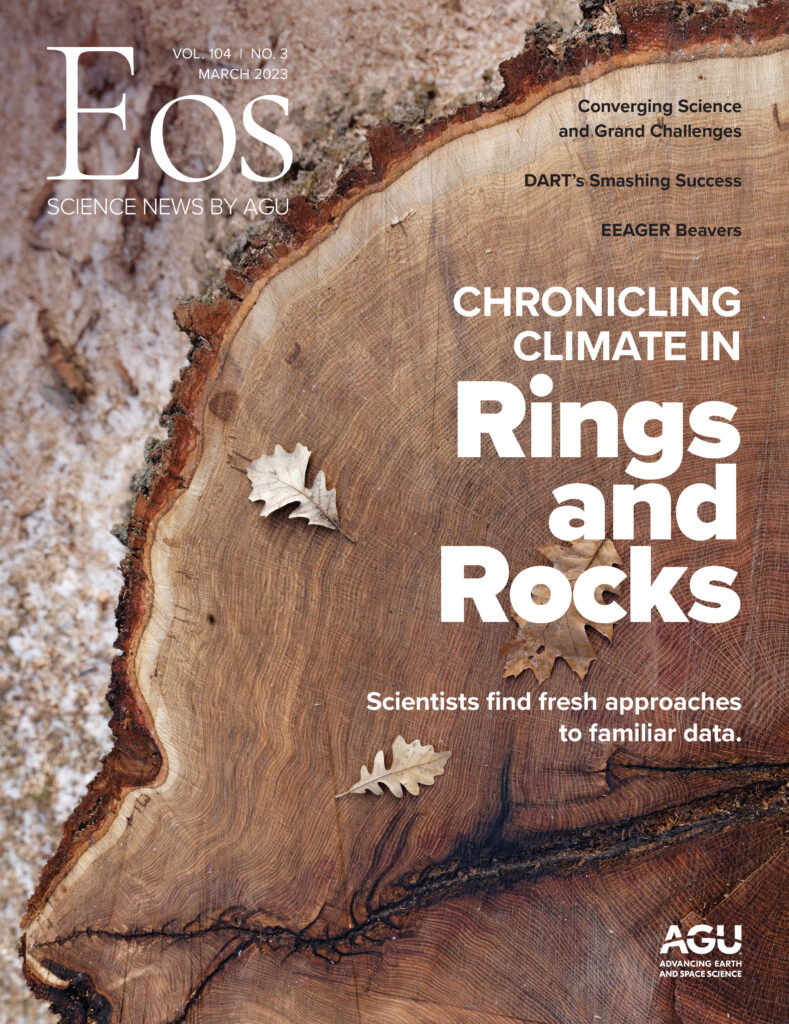Scientists have long known that dendrochronology and geochemistry offer substantial clues about our planet’s past. In this month’s Eos, we take a look at how innovative techniques and converging sciences are helping to yield new discoveries in old records.
So what can those records tell us about our past, present, and future climate? Here are some fascinating facts:
1. New York City has a forest of old-growth timbers in its rafters, with some beams dating as far back as the early 1500s. Timbers of trees felled from the Adirondacks to Alabama tell a story of droughts and deluges that have “great potential to support evidence-based decisionmaking in the city, in terms of both cultural heritage and climate risk.” Jenessa Duncombe explores the climate database hidden in the Big Apple’s attic in “Finding Climate History in the Rafters of New York City Buildings.”
2. Following the Chicxulub impact event, nonavian dinosaurs faced a future that was either bad or worse: quick death in a fiery inferno or prolonged starvation in the decades-long impact winter that followed. Turn to “A Post-Impact Deep Freeze for Dinosaurs,” in which Aubrey Zerkle shares how she and her team examined sulfur isotopes from Chicxulub crater and identified long-term effects of “the single greatest unavoidable threat to life on Earth”—an asteroid impact.
3. Colombia’s known geological history is well preserved in half a dozen databases, but these resources are akin to boxes of unsorted puzzle pieces—each offering valuable, yet ultimately unassembled, fragments. In “A Puzzle Mat for Assembling Colombia’s Geologic History,” Carolina Ortiz-Guerrero tells the tale of early-career researchers who compiled the new Colombian Geochronological Database to contextualize the data, make it accessible, and identify missing pieces.
All three exercises in reevaluating climate records are transdisciplinary by nature, involving science and commerce, history and chemistry, data infrastructure and geology. They are exemplar projects in “Converging Toward Solutions to Grand Challenges,” a theme Ryan McGranaghan, Adam Kellerman, and Mark Olson explore in their opinion, which is itself concerned with the future of the U.S. power grid system.
As narrowly defined analyses of rings and rocks give way to more nuanced ebbs and flows of contextual data, Eos is proud to share how the geosciences are primed to address quandaries of the past and challenges of the future.
—Caryl-Sue Micalizio, Editor in Chief


